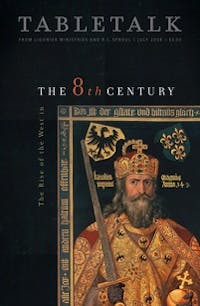
Request your free, three-month trial to Tabletalk magazine. You’ll receive the print issue monthly and gain immediate digital access to decades of archives. This trial is risk-free. No credit card required.
Try Tabletalk NowAlready receive Tabletalk magazine every month?
Verify your email address to gain unlimited access.
One could perhaps make the argument that the history of the church consists of one division after another. Nevertheless, while history is replete with ecclesiastical divisions, there is a unity that transcends all the worldly clamor and devilish confusion surrounding the history of God’s people. This unity is not the result of ecumenical doctrinal compromise. It is just the opposite. It is a unity that transcends all heresies on account of the fact that it is a unity established in God Himself.
For God sees not as man sees, and His story of the unfolding covenant of redemption brings God-governed, God-centered, and God-glorifying unity to all of history. Just as God has one purpose for all of history, God is in all of history; thus, there is an overarching unity in all of history precisely because God is sovereign over all events in history, by right and by necessity.
In eighth-century pagan Germany, a Gospel- preaching, English Augustinian monk named Boniface was martyred because he constructed a place for Christian worship using the wood of an oak tree dedicated to the god of thunder. Boniface did not physically endure the socioreligious divisions of the eighth-century; however, the truth of God did endure.
Eight centuries later, a German Augustinian monk from the town of Wittenberg named Luther heard the same Gospel that Boniface had preached. His message of Gospel-centered reform earned him the right to receive the title “heretic” in the papal bull Exsurge Domine issued on June 15, 1520, by Pope Leo X. It was that same papal bull that Luther burned on December 10, 1520, by the Elster Gate in Wittenberg, where to this day stands a giant oak tree that was dedicated to him on that historic occasion. In turn, the same Gospel that Luther proclaimed ignited a flame that set the world on fire, spreading from Germany to England, where the flames of burning wood ignited the bodies of many Gospel-preaching English martyrs, whose voices, along with the voices of Boniface and Luther, sing as they bow before the throne of Almighty God, coram Deo: “The body they may kill: God’s truth abideth still, His kingdom is forever.”
